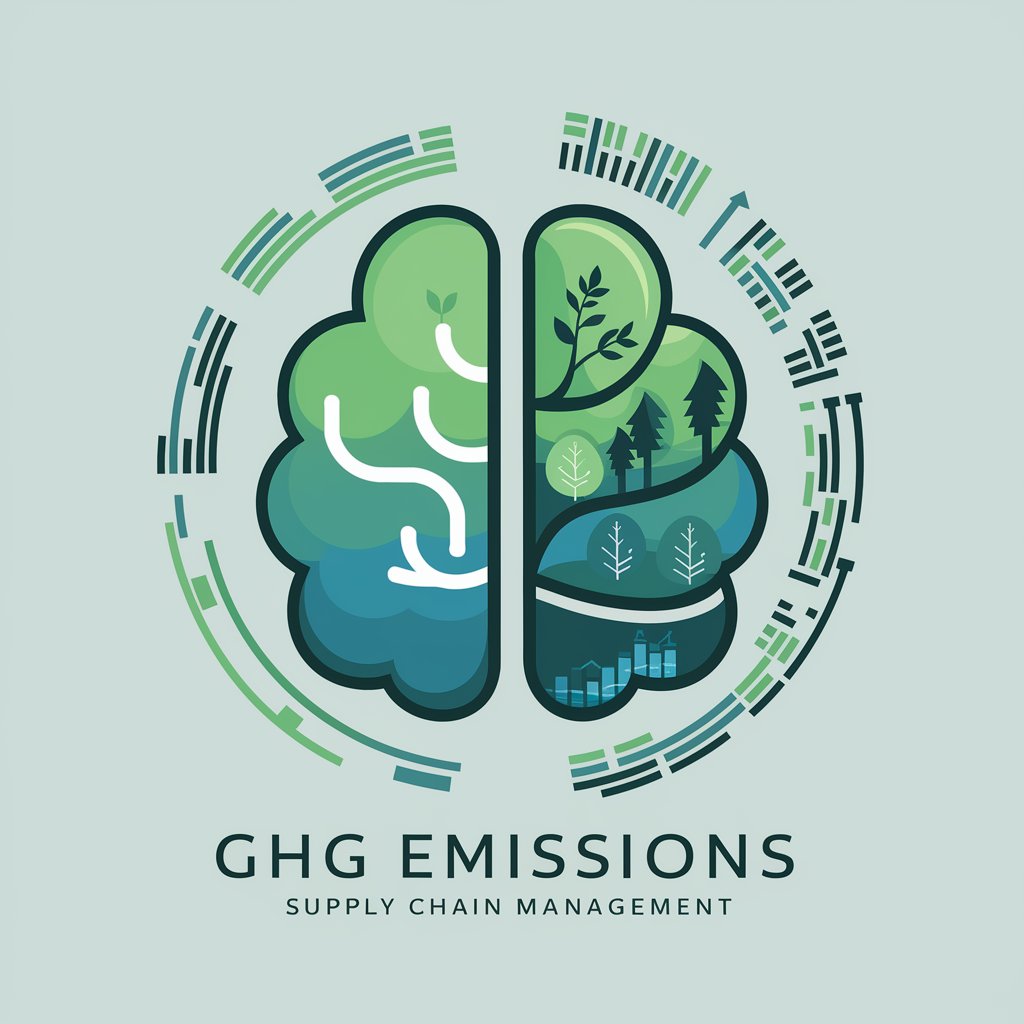GHG Emissions Calculator - GHG Emissions Expertise

Welcome to the GHG Emissions Calculator, your expert in precision emission calculations.
AI-driven Emissions Insights
How do I calculate GHG emissions for a specific industrial process?
What are the best practices for GHG accounting in corporate sustainability?
Can you explain the methodologies used in Scope 1, Scope 2, and Scope 3 emissions calculations?
What tools and resources are available for accurate GHG emissions reporting?
Get Embed Code
Overview of GHG Emissions Calculator
The GHG Emissions Calculator is a specialized tool designed to support professionals in the field of environmental science and sustainability by providing accurate and comprehensive calculations of greenhouse gas (GHG) emissions. This tool leverages the methodologies outlined in the Greenhouse Gas Protocol, the most widely used international accounting tool for government and business leaders to understand, quantify, and manage greenhouse gas emissions. The GHG Emissions Calculator is capable of handling a wide range of emission sources and types, including direct emissions from controlled sources, indirect emissions from the generation of purchased energy, and other indirect emissions. A key feature of this tool is its ability to tailor calculations to the specific needs of the user by requesting additional details or specifics, ensuring precision and relevance. For example, it can calculate the emissions from a company's fleet of vehicles, the electricity consumption of an office building, or the indirect emissions associated with a product's life cycle. Powered by ChatGPT-4o。

Key Functions and Applications
Scope 1 Emission Calculations
Example
Calculating the emissions from a manufacturing plant's use of natural gas.
Scenario
A company needs to report its direct greenhouse gas emissions to comply with local regulations. The GHG Emissions Calculator can quantify the emissions resulting from the natural gas burned in the plant's operations, providing the company with accurate data for reporting and strategies for reduction.
Scope 2 Emission Calculations
Example
Assessing the GHG emissions from purchased electricity for a data center.
Scenario
A tech company wishes to evaluate and reduce its carbon footprint. By inputting data on the amount of electricity purchased to power its data center, the GHG Emissions Calculator provides an analysis of the associated indirect emissions, enabling the company to explore renewable energy options.
Scope 3 Emission Evaluations
Example
Evaluating emissions from a supply chain.
Scenario
A clothing retailer aiming to achieve sustainability goals requires a comprehensive understanding of its supply chain emissions. The calculator can assess the emissions from various stages, such as material production, transportation, and end-of-life disposal, offering insights for improvement.
Target User Groups
Environmental Professionals
Experts in environmental science and sustainability who require precise GHG emission data for reporting, regulatory compliance, or to guide mitigation strategies. These professionals benefit from the calculator's comprehensive and customizable approach.
Corporate Sustainability Managers
Individuals responsible for managing and reporting a company's environmental performance. They utilize the tool to calculate emissions, set reduction targets, and implement sustainability initiatives across all operational scopes.
Policy Makers and Government Officials
Officials who need accurate and detailed GHG emission data to design, implement, and monitor environmental policies and regulations. The calculator helps in assessing the effectiveness of policies and in planning future initiatives.

How to Use GHG Emissions Calculator
Start Free Trial
Begin by visiting yeschat.ai to access a free trial of GHG Emissions Calculator without needing to log in or subscribe to ChatGPT Plus.
Gather Data
Collect all relevant data pertaining to your emission sources, including energy consumption, vehicle usage, and any process emissions.
Choose Categories
Select the appropriate emission categories and scopes relevant to your data, such as Scope 1 for direct emissions or Scope 2 for indirect energy emissions.
Input Data
Enter your collected data into the GHG Emissions Calculator, ensuring accuracy and completeness for each category and scope.
Analyze & Interpret
Review the calculated emissions output, utilize the insights for sustainability reporting, carbon footprint reduction strategies, or compliance with environmental regulations.
Try other advanced and practical GPTs
Scope 3 Emissions Advisor
Empowering carbon transparency across your value chain.

Euro 6 Emissions Regulation Expert
Navigating Euro 6 Compliance with AI

Snarky Gourmet Weeknight Meal Planner
Where gourmet cooking meets witty banter.

Synonym Buns
Condense with Confidence: AI-Powered Synonym Suggestions

Serena Wry
Elevating AI Conversations with Wit and Wisdom

Zeppo
Embrace the Absurd with AI

Carbon Emissions Consultant
Empowering carbon abatement with AI.

Eco Analyst
Empower sustainability with AI analysis.

GHG Emissions
Empower your sustainability with AI-driven GHG insights.

Quick Thinker
Direct answers from AI, refined and quick.

Quick Positivity
Uplifting You with AI-Powered Positivity

Choose Your World of Story Weaver
Craft Your Story with AI

GHG Emissions Calculator Q&A
What data do I need to use the GHG Emissions Calculator?
You'll need detailed information about your energy consumption, transportation methods, waste generation, and any industrial processes that produce direct emissions. Gathering accurate data is crucial for precise calculations.
Can GHG Emissions Calculator help with Scope 3 emissions?
Yes, it is designed to assist with Scope 3 calculations by providing guidance on categorizing and quantifying indirect emissions from activities like business travel, product life cycle, and supply chain operations.
How does the calculator ensure the accuracy of emissions calculations?
The GHG Emissions Calculator adheres to the Greenhouse Gas Protocol, using established emission factors and methodologies to ensure reliable and accurate calculations.
Is the tool suitable for small businesses?
Absolutely, the GHG Emissions Calculator is designed to be user-friendly and applicable for organizations of all sizes, including small businesses seeking to understand and manage their carbon footprint.
Can I use this tool for reporting compliance?
Yes, the tool's calculations can be used to support compliance reporting for various environmental regulations and voluntary sustainability standards, helping you maintain transparency and accountability.
